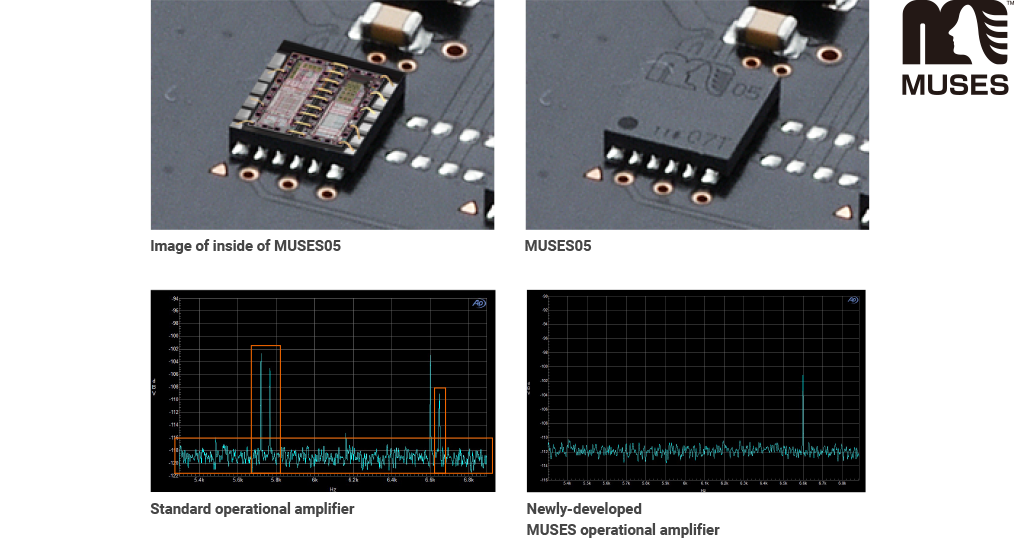
High-Resolution audio sources can achieve things that traditional CD and compressed audio sources cannot:
• Reproduce ultrahigh frequencies that, though inaudible to the human ear, interact with the audible frequency range
and present subtle psychoacoustic effects.
• Accurately reproduce sounds evenly at varying volume levels.
(Fig.1) The vertical axis represents the Bit rate, indicating how much music detail is received per sample. While CDs can record up to 16Bits, High-Resolution audio files can be recorded at 24 to 32Bits.
The horizontal axis represents the sampling rate, which is how many times per second sound is sampled. The higher the sampling rate is, the more segments of sound are captured, bringing the recording as close to the original performance as possible.
As you can see in the chart, the highest CD sampling rate is 44.1kHz, while High-Resolution files have a sampling rate of 96kHZ/24Bit and can now be extended up to 384kHz with Full-Spec High-Resolution.
The advancement of digital recording has made it possible to convert analog waveforms (Fig.2) more accurately into digital data (Fig.3). This means it is now possible to create a digital music file that contains data that closely resembles the original analog waveform.


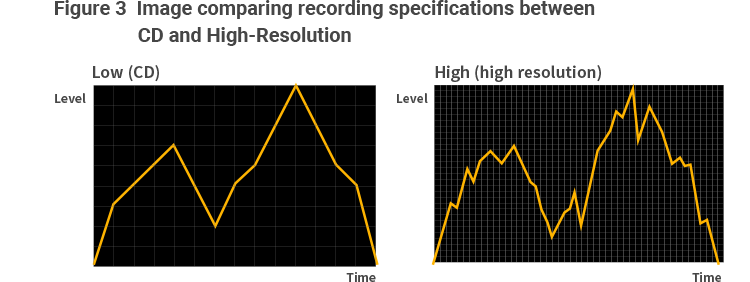
Consider ultrahigh frequency range playback, using the violin as an example. As you can see in Figure 4, when a violin’s sound is measured, it reveals a waveform.
(Fig.5) In addition to the fundamental 1st harmonic (the original wave), higher frequencies, found in the 2nd and 3rd harmonic, produce subtle sound characteristics of the instrument, a violin in this instance. The high frequency components of harmonics may reach a frequency range that is inaudible to the human ear, but important to maintain the original characteristic of the music.
In many cases of lower resolution audio like CDs and common streaming music, the harmonics of high frequency components are simply cut out due to their inability to capture those sounds. And while that range of sound is not necessarily within an audible range to the human ear (Fig. 6), simply eliminating those harmonics will result in less authentic sound and instrument characteristics that may stray from the original.
A High-Resolution sound source can playback these ultrahigh frequencies, and therefore accurately reproduce the original sounds from the musical instruments; specifically, sounds in the high frequency range that are more expressive and create a more delicate and rich sound. Above all, the greatest benefit of High-Resolution playback is bright, high frequency sounds reproduced with very little distortion and realistic sound characteristics.
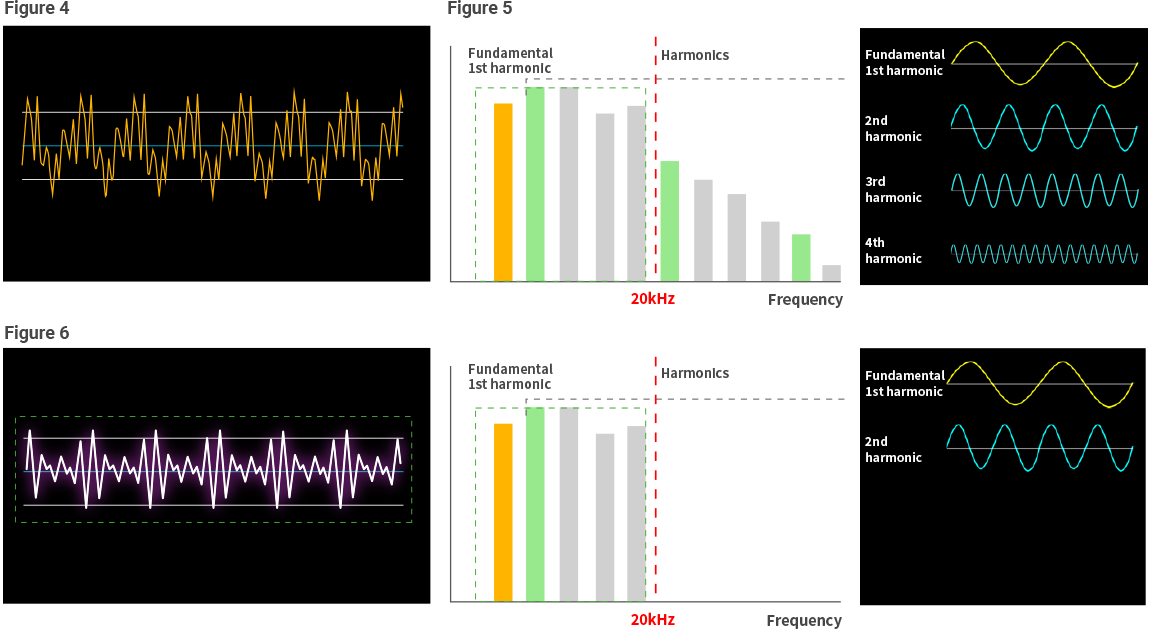
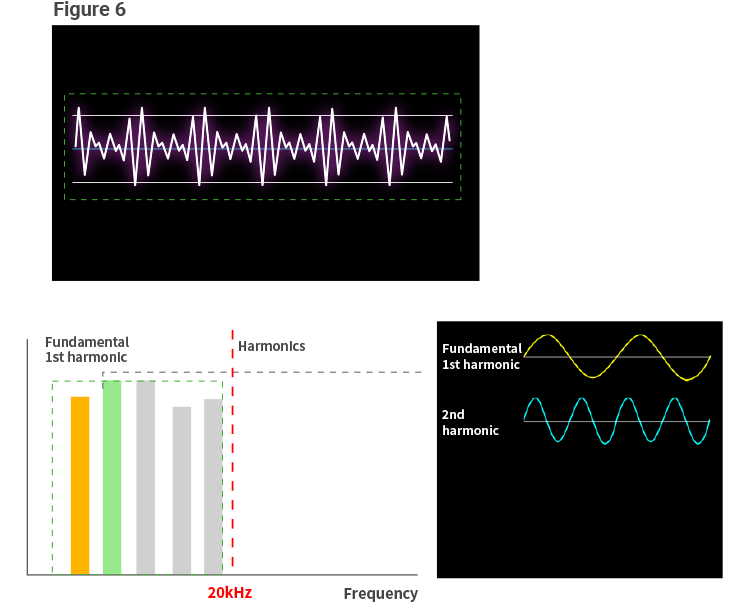


The Problem with Jitter
Jitter, or clocking errors, occur when samples of a digital recording become misaligned due to having several clock references in separate components - common in car audio. While the file is transmitted between components and converted from a digital file to sound you can hear, each sample references a point in time and uses an internal clock to determine when that data should be played. Using CD as an example, 44,100 samples must be aligned to the original recording each second. If any of these samples deviate from the exact moment in time they are supposed to play, you experience jitter - subtle distortions and loss of music detail. When considering the incredible sampling rates High-Resolution audio is capable of, i.e. 384,000 samples per second, the problem of jitter can become even more dramatic. With the new Master Clock Management System at the heart of AlpineF#1Status, all transmissions and conversions are completely synchronized by referencing a single “master clock,” virtually eliminating all jitter in audio transmission.
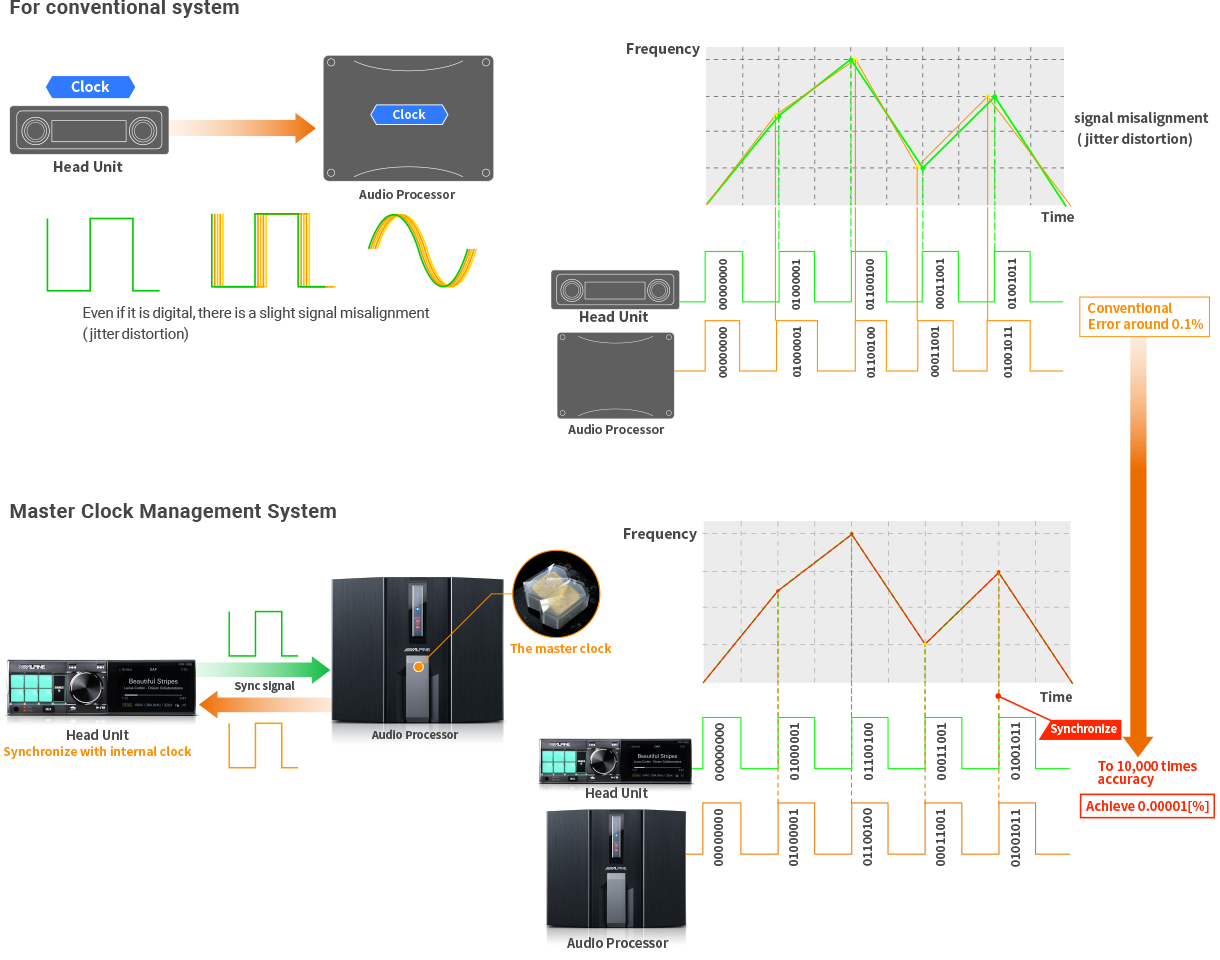
About the OCXO DuCULoN® Crystal Oscillator
At the heart of the Master Clock Management System, the OCXO DuCuLoN® crystal oscillator was engineered with incredible accuracy. This ultra-premium component is located at the center of the HDP-H900 Audio processor where all the tuning of sound occurs. Shielded by a copper plate, the crystal oscillator’s location is protected from the influence of noise and temperature fluctuations that may happen in the vehicle. Two quartz crystals are housed in a dedicated, heat-insulated case along with a temperature control circuit which allows it to have 500 times the accuracy compared to a standard crystal oscillator. Ambient temperature changes can cause up to .002% of deviation of accuracy. To reduce that fluctuation to 0%, the oscillator is heated when the power supply is turned on. Once its temperature reaches a level where the clock accuracy stabilizes, the “clock” indicator light on the Head Unit Commander turns on, and the temperature within the clock is kept constant.
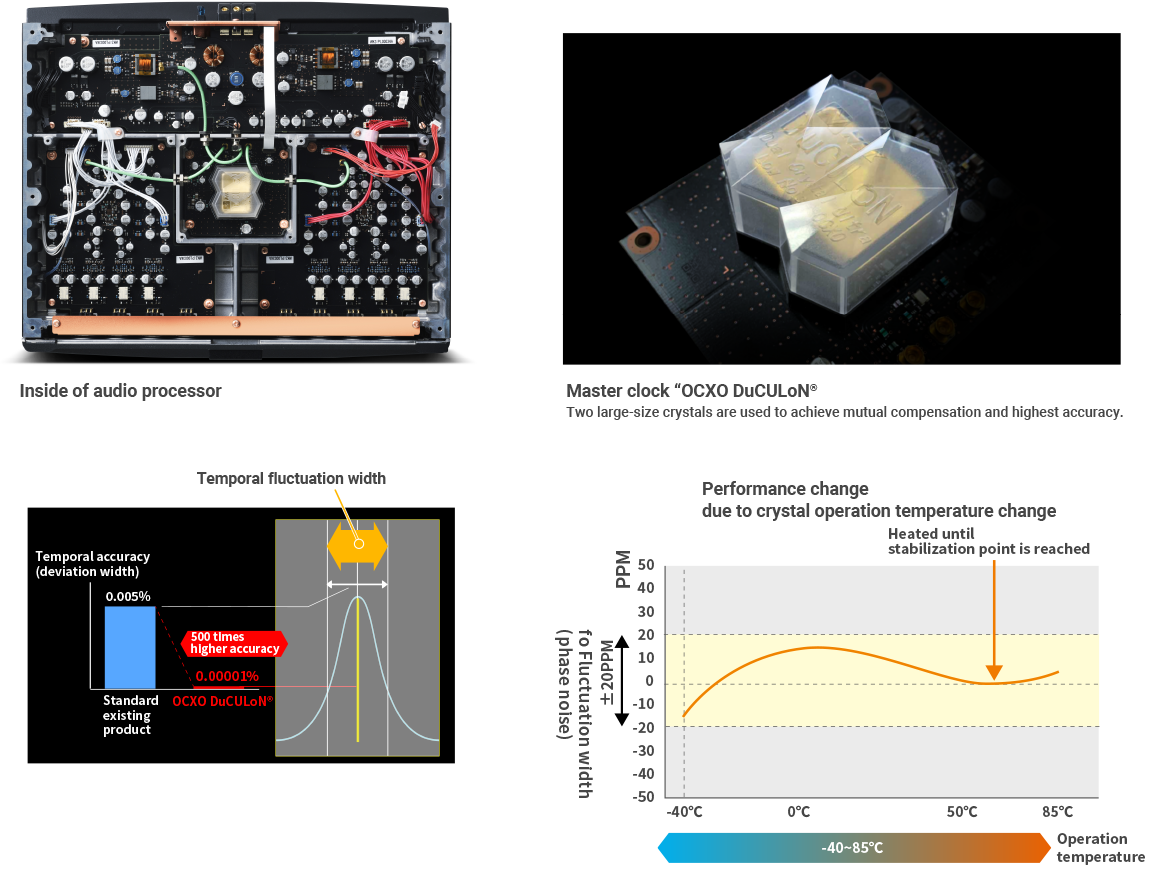

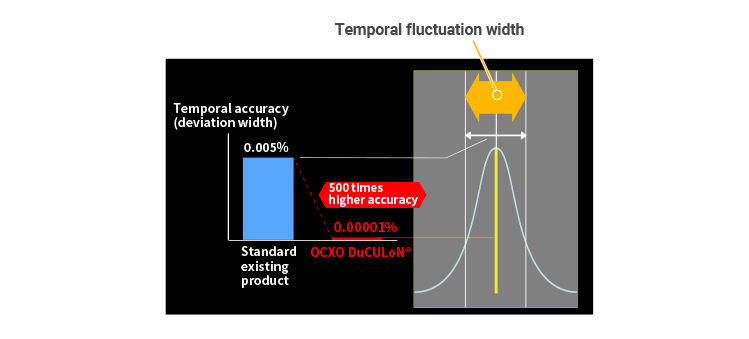
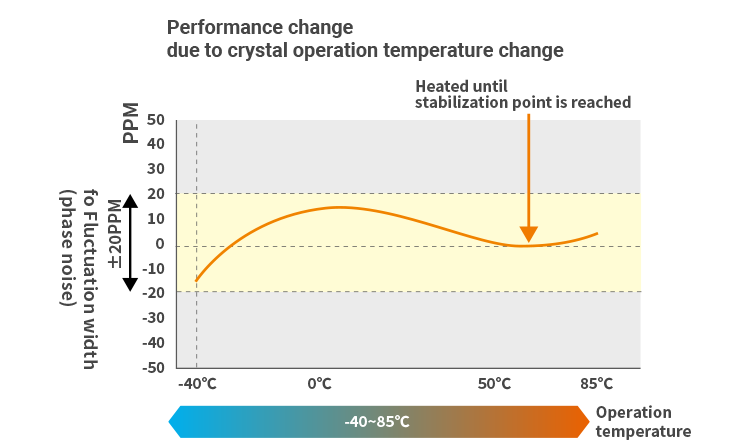
About Time Correction
While accuracy and performance are important factors to consider in a car audio system, having properly tuned speakers will determine the overall sound quality. It is also important that the system has high-precision tuning features to ensure High-Resolution sound quality. Inside a vehicle, sound arrives at different times to the listener, due to the different positions of the high, mid, and low-frequency speakers and the asymmetrical distance between the driver’s seat and the right and left speaker placements. Along with the time misalignment, the frequency response can vary between left and right speakers due to reflections and absorptions in the vehicle. To account for these discrepancies, a digital audio processor (DSP) is incorporated to make time corrections and equalization to the speakers so that the appropriate sounds arrive at the listener's ears at the same time. To reproduce High-Resolution sound, the speakers must be tuned accurately. The below diagram shows a case where the gap in the timing between the left and right speaker is large versus small. The gap in distance causes the sound waves from both speakers to cancel each other out and produce distortion, which greatly affects sound quality. While in traditional products, the gap can only be adjusted at 7.2mm steps (at an ambient temperature of 20°C), the AlpineF#1Status DSP can be adjusted at 0.9 mm steps, 8x more precise than traditional DSPs. Because the listener is likely to notice timing differences, particularly in the high-frequency range found in High-Resolution sound, micro-adjustment capabilities like this are crucial in the car interior space. To achieve more accurate sound tuning, AlpineF#1Status has incorporated four of the highest-quality digital sound processors (DSPs) capable of 64Bit/1GHz processing power, similar to a personal computer’s central processing unit (CPU). This processor has 10 times the capability of traditional Digital Sound Processors, allowing it to process High-Resolution, high-spec signals without losing sound details.
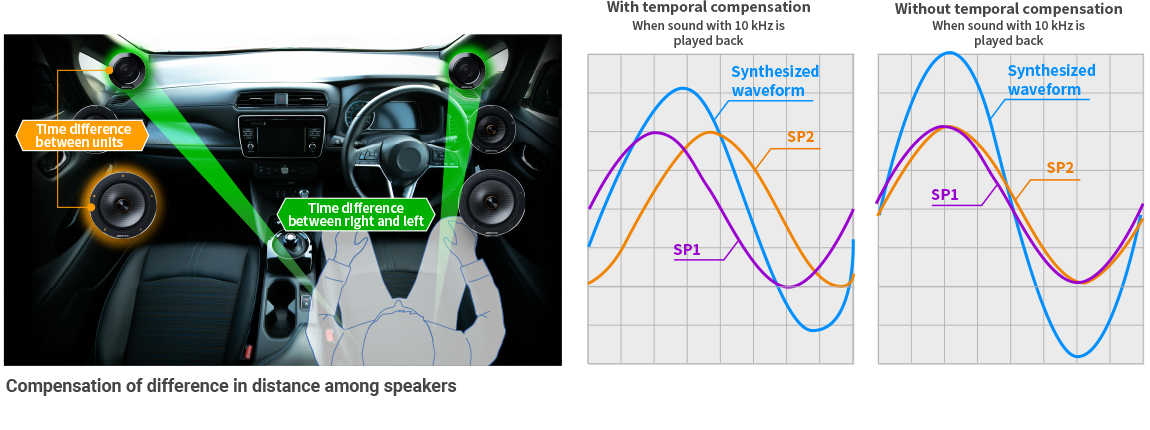
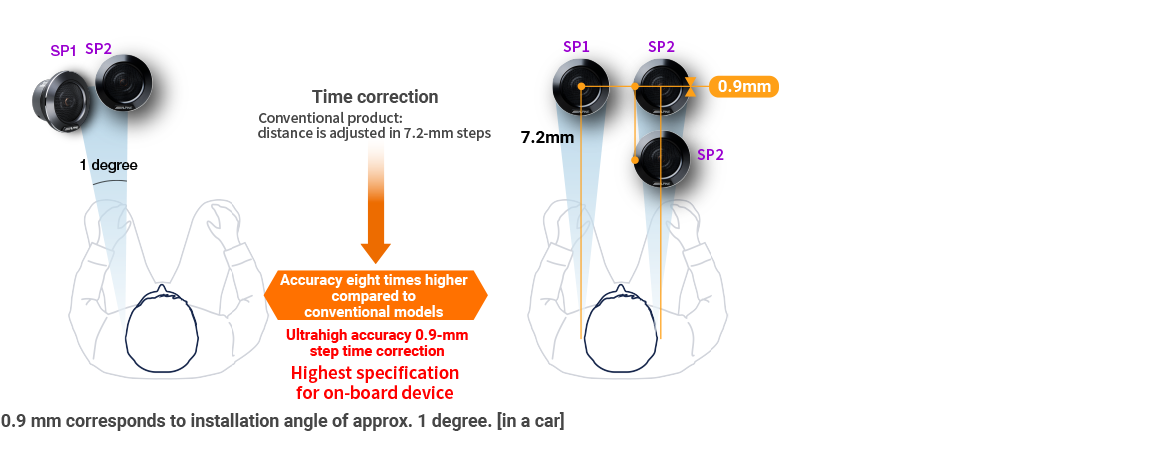

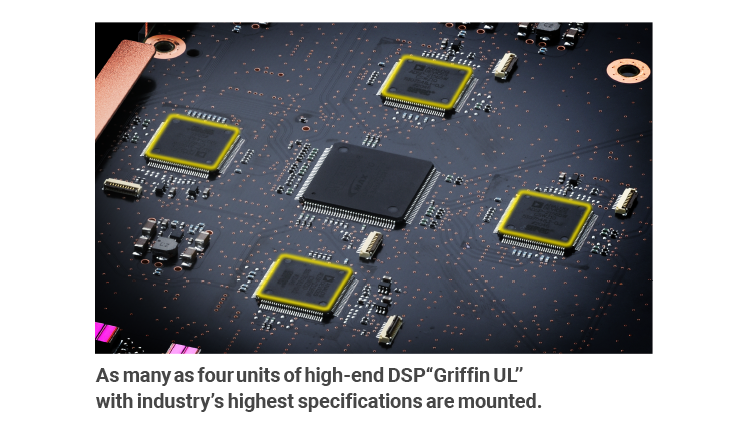
About Carbon Fiber Reinforced Plastic (CFRP)
Traditional speakers are made with optimized materials and a structure suited to the specific playback bandwidth. For example, if the diaphragm is thinned and its weight is reduced, it becomes optimal for high-frequency audio playback, but will also hurt its low frequency capabilities. If the diaphragm is thick and rigid, it becomes optimal only for low-frequency audio playback but too heavy to play high-frequency tones. The challenge during the speaker production process is selecting materials that complement the characteristics of the speaker while overcoming disadvantages during playback. In other words, the material of the speaker directly impacts the sound during playback. To tackle this issue, AlpineF#1Status unified the tones of the speakers by unifying their material and structure. After extensive research, the best result was using Carbon-Fiber Reinforced Plastics (CFRP). With a lightweight, yet highly rigid material, CFRP is used as the diaphragm for speakers ranging from the ultrahigh frequency tweeter to the low frequency subwoofer. This is the first time the same cone material has been used throughout the entire system from tweeter to subwoofer in the car audio industry.

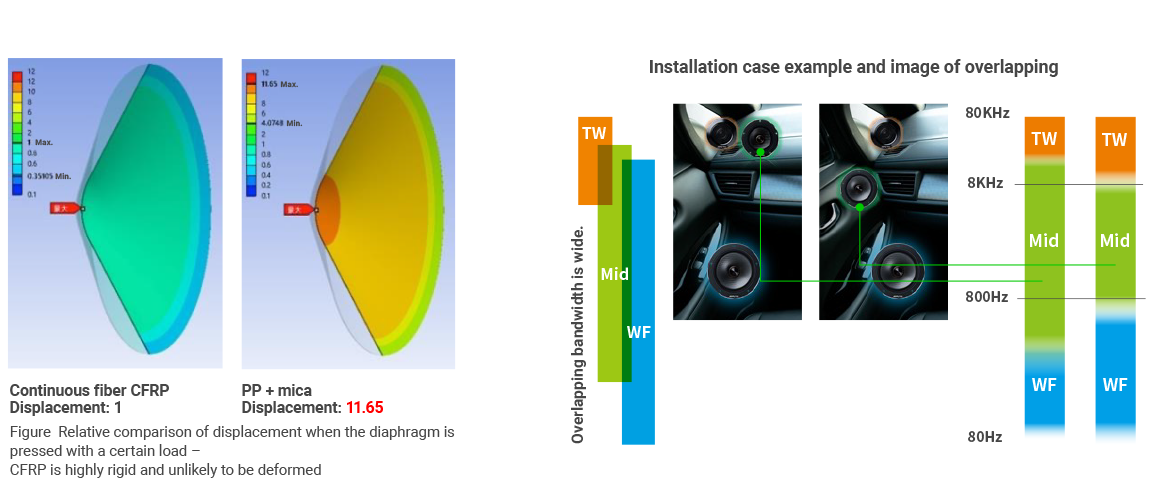
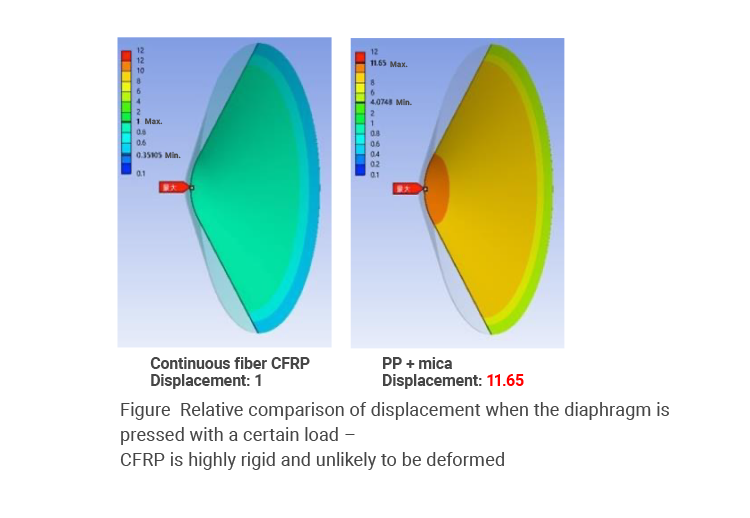
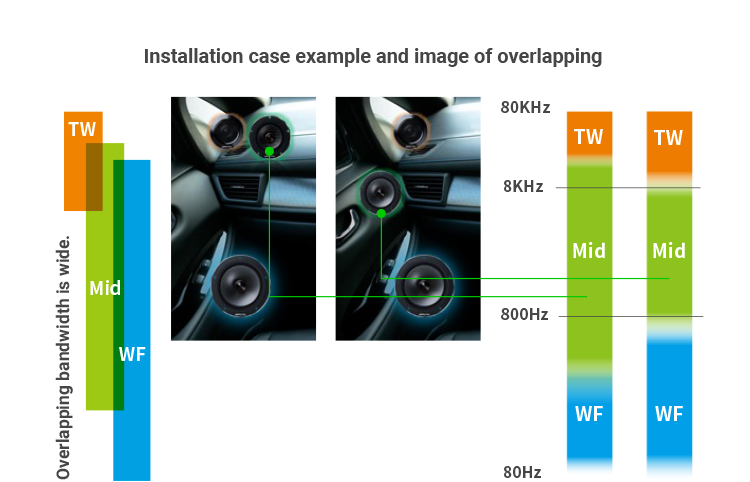

About the Operational Amplifier
We noticed the sound quality change caused by minute current changes in the internal circuitry and the influence of harmonic waves in a bandwidth of several MHz. We enhanced the signal processing purity by changing the standard structure of two circuits per chip to a single circuit per chip. This change isolated each amplifier circuit and thoroughly eliminated mutual interference, providing clear, crisp sound quality in the audible bandwidth. Our design is based on the MUSE05 op amp, used for the first time in a n automotive application.
